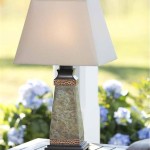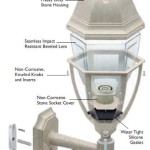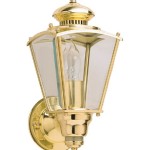How to Build a Homemade Outdoor Wood Stove
An outdoor wood stove can be a valuable addition to any backyard, providing warmth and a place to cook during chilly weather or while enjoying a campfire. Building your own wood stove is not only a rewarding project, but it can also be a cost-effective way to create a custom-made stove that fits your specific needs. This article will guide you through the steps necessary to construct a safe and efficient DIY wood stove for your outdoor space.
1. Choose your Stove Design and Gather Materials
The first step in building a homemade outdoor wood stove is to decide on the design. There are countless options available, from simple fire pits to more elaborate structures with cooking surfaces and even water heating capabilities. Research different designs and choose one that suits your skill level and desired functionality. Once you have settled on a design, gather all the necessary materials. These may include:
- Firebricks
- Refractory cement
- Steel sheet metal
- Angle iron
- Hardware (screws, nuts, bolts)
- Heat-resistant paint
- Tools (welder, grinder, drill, etc.)
The specific materials will vary depending on the chosen design. Consult online resources, books, or plans for detailed material lists and recommendations. It is crucial to choose high-quality materials that can withstand the intense heat generated by a wood-burning stove.
2. Create the Stove's Base and Firebox
The foundation of your outdoor wood stove is the base and firebox. Begin by constructing a solid base using angle iron or steel sheet metal. This provides a sturdy platform for the stove and ensures stability. Next, build the firebox using firebricks and refractory cement. The firebox is the heart of the stove where the fire burns. Ensure the firebox is adequately sized to accommodate the desired firewood and create sufficient heat.
When constructing the firebox, consider the following crucial elements:
-
Air intake:
A well-designed firebox needs proper air intake for efficient combustion. Incorporate a draft system using metal tubes or openings to regulate airflow. -
Fire grate:
Install a grate to hold the burning wood and allow ashes to fall below. The grate can be made from steel mesh or angle iron. -
Firebrick layout:
The firebricks should be carefully laid, creating a durable and heat-resistant lining for the firebox.
Pay close attention to the firebox's shape and size to achieve optimal heat distribution and combustion. This will influence the stove's overall performance and efficiency.
3. Build the Exterior Shell and Add Finishing Touches
Once the base and firebox are complete, construct the exterior shell of the stove. Use steel sheet metal to create the desired shape and size. Consider adding decorative features, such as a chimney or a cooking surface, based on your chosen design. Remember to create openings for air intake and smoke exhaust.
When handling sheet metal, use proper safety gear, such as gloves and eye protection. If welding is required, ensure proper ventilation and wear a welding mask.
After the exterior shell is finished, add finishing touches like a door for loading the stove, a chimney cap for efficient smoke dispersal, and a heat shield to protect surrounding surfaces. Ensure the stove door is airtight to prevent drafts and maintain optimal combustion.
4. Test and Season the Stove
Before using the newly built stove, test its performance by setting a small fire inside. Observe the draft, smoke patterns, and heat distribution. Make adjustments to the air intake or chimney as needed to achieve optimal combustion.
After the initial test, it is recommended to season the stove by burning a small fire for several hours. This will help to harden the refractory cement and prevent cracking from future heat exposure.
5. Safety Considerations
Building and using an outdoor wood stove involves inherent safety risks. Always exercise caution and follow these guidelines:
-
Placement:
Ensure the stove is placed on a level, non-flammable surface and a safe distance from combustible materials such as trees or structures. -
Ventilation:
Provide adequate ventilation to prevent the accumulation of carbon monoxide. -
Fire safety:
Keep a fire extinguisher and a bucket of water nearby for emergencies. -
Supervision:
Never leave a fire unattended.
By following these tips and taking necessary precautions, you can enjoy the benefits of a homemade outdoor wood stove in your backyard while ensuring safety for yourself and others.

Build A 2 In 1 Outdoor Wood Stove With Brick Cement Diy

How To Build Your Own Diy Outdoor Wood Stove Oven Cooker Grill And Smoker Icreatived

How To Build An Outdoor Stove Ep 4 Howtospecialist Step By Diy Plans

Diy Rocket Stove For Your Outdoor Cooking Needs The Art Of Doing Stuff

24 Diy Wood Stoves Thehomesteadingboards Com

Making An Outdoor Wood Furnace With Bob Part 1

6 Diy Outdoor Stoves To Make Yourself Shelterness Наружная плита Дровяная печь Печь на улице

Plans How To Build A Wood Outdoor Boiler

How To Build Your Own Diy Outdoor Wood Stove Oven Cooker Grill And Smoker Funnyarah

Build A 2 In 1 Outdoor Wood Stove With Brick Cement Diy







